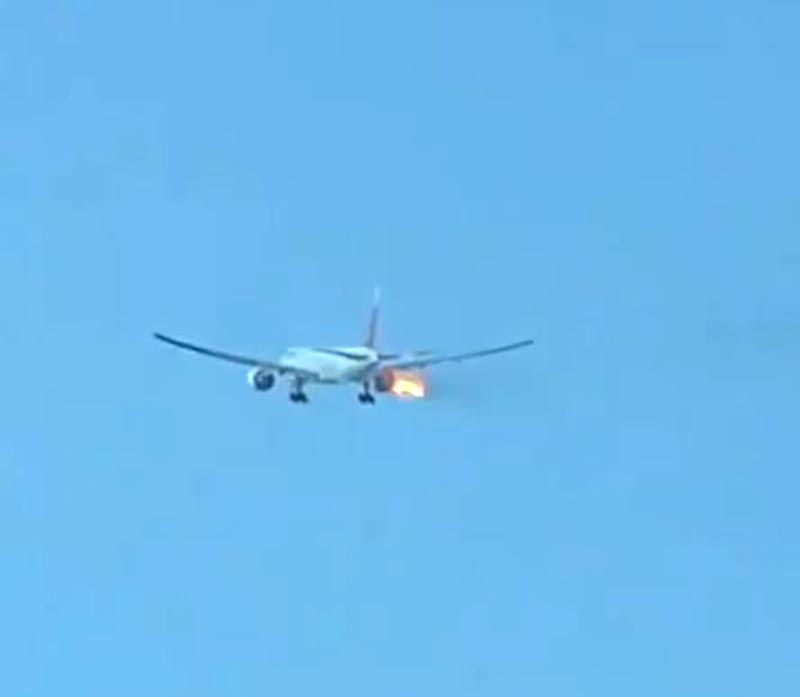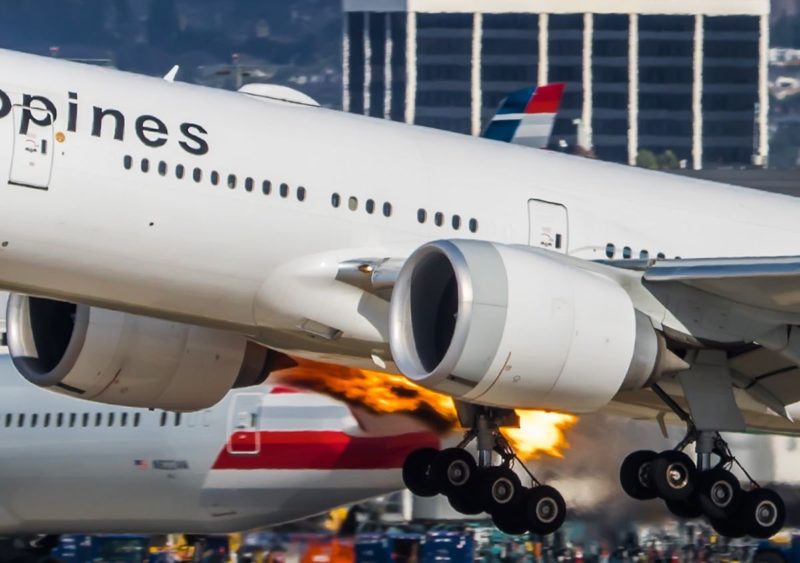Pal Boeing 777
Video shows Philippine Airlines with flames coming out of engine 00:37 All 347 passengers and 18 crew aboard Flight 113, a Boeing Co 777 widebody, are safe, an airline spokeswoman said. Philippine Airlines, the national flag carrier, conducted its first flight March 15, 1941, and has been operating longer than any other airline in Asia. PAL is a long-time Boeing customer and currently operates five Boeing 747-400s. The Boeing 777-300ER is 19 percent lighter than its closest competitor, greatly reducing its fuel requirement. Though not the most glamorous of the big airplanes, the Boeing 777-300ER is longer than both the Boeing 747-400 (by 10 feet) and Airbus A380-800 (by 3 feet). Philippine Airlines. Philippine Airlines was founded as Philippine Aerial Taxi Company in 1935 and commenced operations under its current name on March 15, 1941.

A Philippine Airlines Boeing 777-300 (registration number RP-C7775) had a right engine fire after takeoff from LAX (Los Angeles International Airport) shortly after 11:15 am today.
More Pal Boeing 777 Images
The Manila-bound Flight 113 landed safely back at LAX about 45 minutes after takeoff.
777 engine fire was visible on the ground
Smoke from the engine was clearly visible to people observing the event from the ground. Inside the cabin, passengers were filming the incident. Banging sounds could be heard from inside the cabin, something to be expected since the misfiring engine was still running while on fire.


Emergency landing back to LAX
The heavily loaded 777 bound for Manila performed an emergency landing back to LAX. The tires to deflated on landing. However, the Fire Department was quickly in place to cool down the tires with water.
The plane was safely on the runway 25L at LAX within about 45 minutes after the inflight engine fire started. After landing the plane taxied off the runway on its own, where it was met by emergency services.
Passengers reported there was very little information from the pilots during the event. The announcement from the cockpit was that they were headed back to Los Angeles, but didn’t explain why to the passengers. According to passengers, the flight attendants appeared frantic getting the cabin ready for landing on such short notice.
Twitter posts about the Philippine Airlines 777 engine fire at LAX
The Captain of Philippine Airlines Flight 113
How pilots compartmentalize procedures during emergencies
Pilots often have their hands full in situations such as this. There is often little or even no time for a full passenger explanation of what is going on with the airplane. Pilot passenger announcements are given when there is time to do so.
Why so little emergency information from the pilots sometimes?
Some passengers on the Philippine flight complained the pilots gave them very little information.
Here’s why you don’t necessarily get too much information from the cockpit during emergency events, such as this one. Pilot procedures are very straight forward in regards to how emergency priorities are handled. Items are taken care of in a certain succession. This ensures safety during the emergency at all times.
Multi-tasking an airplane emergency involves safely multi-tasking the many things simultaneously happening in the cockpit. Safety remains the #1 priority.

First, the pilot must avigate. Avigate means to fly the airplane, maintain full control, while taking care of the emergency situation.
The next priority is to navigate. Navigate means to know where you are at all times and where you are going, from point A to B.
Communicate is the last thing in priority order. Talking to Air Traffic Control, coordinate with the company, and talk with the flight attendants are all important communication items that have to be accomplished.
Last, the pilot will pick up that microphone and give his or her passenger announcementabout what’s going on with the emergency.
As an outside observer of this event, but with good knowledge of airline flight crew emergency procedures, it appears that the Philippine Airlines pilots and flight attendants were performing their job well.
Social media reactions to the incident

We received a lot of reactions from many different social media outlets about our report on the incident. Here is one comment from Ostonu Faga, who provided very intelligent inputs:
Featured Image: Philippine Airlines.
Take your flight deck seat on a Cathay Pacific Airways flight from Auckland, New Zealand to Singapore and see how this 21st century airliner is operated and flown. PLUS, experience a ride in the Cathay Pacific full motion simulator to learn more about the flight systems and emergency operations!
Pal Boeing 777 300 Seating
- 109 minute DVD
- Cathay Pacific Airways
- Auckland – Singapore
- Detailed tour and explanation of the B777 Flightdeck
Airbus A340-300
In this programme you will join Captain Graeme Thomson, Cathay Pacific Airways fleet manager B777, for an insight into this 21st century airliner.
To start with, you’ll join Graeme in the cockpit about 1 hour out of Auckland, New Zealand where you will witness a rare display: an approach in the landing configuration, followed by a Go-Around, a high speed low level (approx. 500 feet) fly past followed by a landing. We then take off from Auckland, destination: Singapore.
As the aircraft cruises to its destination we’ll take you behind the scenes and into the B777 simulator in Hong Kong. This gives Graeme the opportunity to give you a guided tour of the all new LCD equipped flight deck where you’ll learn about Fly-by-Wire (FBW), Electronic Check List, Cursor Control Device (CCD) and Multi Functional Display (MFD). We also show you Thrust Asymmetry Compensation (TAC) including a failure of an engine on take-off and how TAC helps the pilot.
Finally we’ll then rejoin the B777 for the landing at Singapore. This is a ‘must-see’ for anyone interested in this 21st century jet.